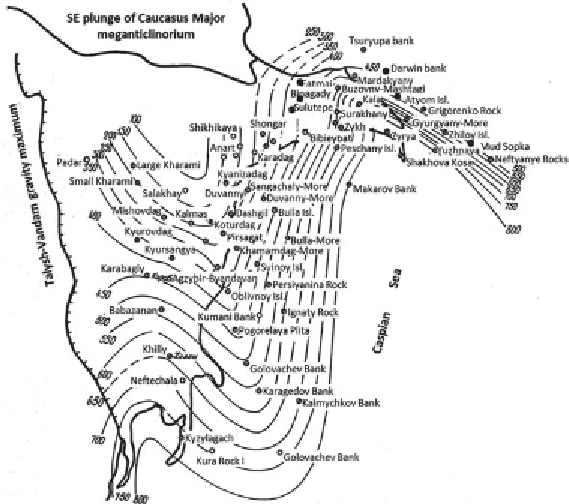Geology Reference
In-Depth Information
Figure 2.11
South Caspian Depression (west flank). Surakhany Fm. ground water total
salinity (based on maximum salinity).
Hence, it follows that the sulphate concentration in the Middle Pliocene
waters is a function of their depth (indirectly) and is controlled mostly
by the temperature according to the following equation: SO
2
−
= 0.63
⋅
t
3.474
. On both flanks the sulphate occurrence area is determined by
the temperature range of 65-70°С, which corresponds with the bound-
ary conditions of the active functioning for the sulphate-reducing micro-
flora (Figure 2.15) (Kuznetsov, Ivanov and Lyalikov, 1962). The microbial
sulphate-reduction in this complex during its entire geologic evolution
was facilitated by several factors. They include the deposit transit through
moderate temperature zones in the course of Middle Pliocene; water salin-
ity of 20 to 250 g/l; рН equal to 4.8-8.2 and Еh equal to (+115)-(-400)
mv
;
the occurrence of large amounts of oil, gas, water-dissolved and dispersed
organic matter.
The combination of these factors naturally could not provide for the
preservation in the sedimentary water of sulphates - relics of the marine
water from the depositional basin. The same is supported by high com-
monality in all intervals of the Middle Pliocene section of the autigenous
10
−
6
⋅

